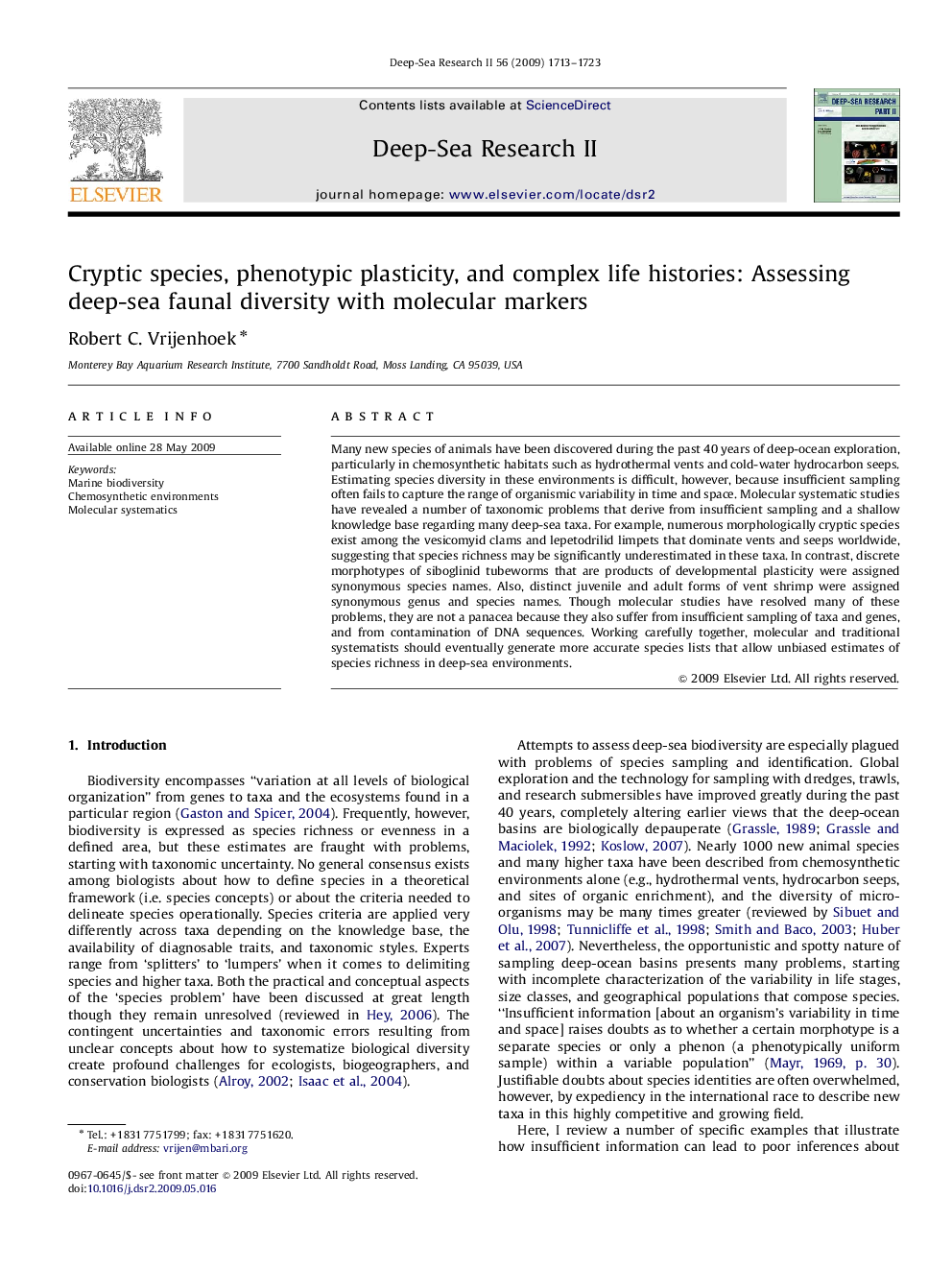| Article ID | Journal | Published Year | Pages | File Type |
|---|---|---|---|---|
| 4537294 | Deep Sea Research Part II: Topical Studies in Oceanography | 2009 | 11 Pages |
Many new species of animals have been discovered during the past 40 years of deep-ocean exploration, particularly in chemosynthetic habitats such as hydrothermal vents and cold-water hydrocarbon seeps. Estimating species diversity in these environments is difficult, however, because insufficient sampling often fails to capture the range of organismic variability in time and space. Molecular systematic studies have revealed a number of taxonomic problems that derive from insufficient sampling and a shallow knowledge base regarding many deep-sea taxa. For example, numerous morphologically cryptic species exist among the vesicomyid clams and lepetodrilid limpets that dominate vents and seeps worldwide, suggesting that species richness may be significantly underestimated in these taxa. In contrast, discrete morphotypes of siboglinid tubeworms that are products of developmental plasticity were assigned synonymous species names. Also, distinct juvenile and adult forms of vent shrimp were assigned synonymous genus and species names. Though molecular studies have resolved many of these problems, they are not a panacea because they also suffer from insufficient sampling of taxa and genes, and from contamination of DNA sequences. Working carefully together, molecular and traditional systematists should eventually generate more accurate species lists that allow unbiased estimates of species richness in deep-sea environments.
